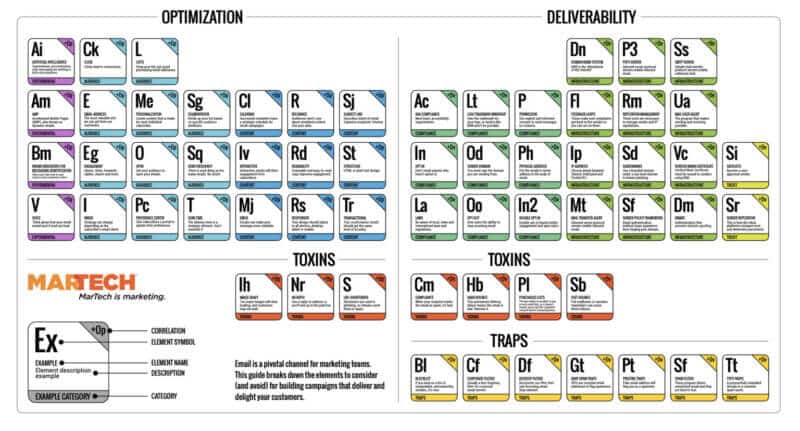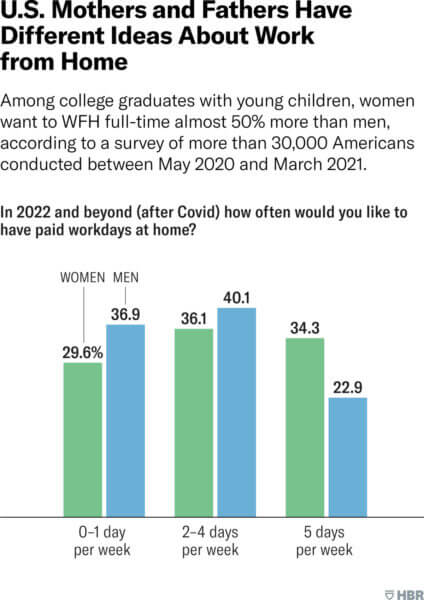Search Engine Land’s daily brief features daily insights, news, tips, and essential bits of wisdom for today’s search marketer. If you would like to read this before the rest of the internet does, sign up here to get it delivered to your inbox daily.
Good morning, Marketers, yesterday was Memorial Day here in the U.S., so I hope you got to relax and reflect over the three-day weekend.
I’ve been reflecting over the weekend, and my mind turned to the internet and technology. I’m a child of the 80s and my first operating system was Windows 95: floppy disks, flash games, dial-up modems, mice with moving parts inside, the whole nine yards.
Then I thought, is what we have now strictly better? It’s much improved, but those gains have given rise to new issues: privacy concerns, hacks, scams, addiction, cyber bullying, to name a few. I (and you) probably wouldn’t have a job if search algorithms and digital advertising didn’t advance from that point, plus it’s certainly not all bad. Last year, for example, the internet was more vital to our existence than ever, helping keep people informed about the pandemic and vaccines, enabling us to stay in touch with one another and providing small businesses with a way to stay alive as we navigated new safety precautions. There is much to be thankful for.
This topic is a can of worms, and as always, I welcome your thoughts, DM me @geochingu on Twitter or email me at gnguyen@thirddoormedia.com (subject line: For better or worse).
George Nguyen,
Editor
The Periodic Table that tackles deliverability and optimization

Email has long been one of the most reliable marketing channels for getting your messaging in front of your customers. Whether it’s content in the form of a weekly newsletter, a personalized promotion or an important account update, marketers need to trust that their message will be delivered and that they’ve optimized those messages to get maximum engagement. That is why our sister site, MarTech, is releasing today an updated Email Marketing Periodic Table that tells you everything you need to know about sending emails that your customers want to receive and that inboxes won’t block.
Each element in this table represents a factor that you need to consider to be successful in email. The elements are gathered into categories based on their relationships to one another, and the categories are designated as related to either Optimization or Deliverability. Further down on the table, you’ll see Toxins, a category for practices that can poison your email marketing efforts, and Traps, which you’ll want to be aware of falling into.
Digital marketing is indeed an art, but it is also a science. We hope this tool serves as an essential reference for your experiments.
Get MarTech’s Email Marketing Periodic Table
Facebook Import is now available in Microsoft Advertising
Fans of Microsoft Advertising’s Google Import feature might be delighted to hear that the company has rolled out Facebook Import, which essentially does the same thing. Facebook Import was first announced as a pilot program at Microsoft’s Advertising Elevate event in April, but now it’s rolling out to advertisers in the U.S., UK, Canada, Australia, New Zealand, France and Germany.
If you’re looking to scale your Facebook Ads campaigns, this feature can help you do that without having to spend extra time reconfiguring everything for a new platform.
How and why you should pause paid search (for science)
When it comes to demonstrating return, I’d wager most of us measure some variation of total revenue over total cost. If it’s high, we’re doing well. If not, we rethink and rework until we hit the ROAS we want. It’s a quickfire estimate of efficacy. The problem is that number doesn’t tell us if we actually lost money buying users who would have converted anyway. And it doesn’t show what might have happened if we simply didn’t spend.
How to structure an incrementality test:
- Set up your test and control groups: Begin by choosing a proportion of your geographic regions for testing. Next, sort and pair them based on sales data and seasonality. Split that list down the middle, so that both groups look more-or-less the same and are easy to compare. Those are your two groups.
- Double, triple, and quadruple check measurement: Before you start any testing, we recommend conducting a tracking audit of your website. This will prevent bad results and make sure you have a clear understanding of how advertising traffic, engagement, and revenue is measured.
- Start the test: Once you’ve got your groups split, and you’re confident in measurement, you’re good to test.
- Analyzing your findings: The structure of this test lets us deploy a Difference-in-Difference test (D-I-D), which compares the impact of a change between two groups to estimate its effects.
Conspiracy theories, doing it for the ‘gram and why you shouldn’t ask Martin Splitt about ranking
“We are not supposed to know much about ranking.” Google’s Martin Splitt revealed that the search advocates, which include (but isn’t limited to) himself, John Mueller and Gary Illyes, may not have the kind of insights into Google’s ranking formula that the community thinks they do. They used to, though, but apparently the company policy changed before Splitt joined in 2018.
Why even bother? Jimmy Fallon pokes fun at Instagram and Facebook’s new option to disable likes.
What percent of SEOs are also conspiracy theorists? The replies to Kim Doughty’s Twitter thread are both hilarious and cringeworthy. My favorite reply is “It’s not a conspiracy theory if in your heart you know it’s true.”
Hybrid work environments can backfire for certain types of workers, and by extension, employers

In hybrid work environments, allowing employees to choose their WFH days is most likely to hinder career opportunities for parents — especially women. “We found that WFH employees had a 50% lower rate of promotion after 21 months compared to their office colleagues,” Nicholas Bloom, professor of economics at Stanford University and co-director of the Productivity, Innovation and Entrepreneurship program at the National Bureau of Economic Research, said of a 2014 study he conducted in China, “This huge WFH promotion penalty chimes with comments I’ve heard over the years from managers. They often confided that home-based employees in their teams get passed over on promotions because they are out of touch with the office.”
It’s not 2014 and most of our readers aren’t in China, but the takeaway still applies: Allowing employees to designate their own WFH days can create office in-groups and WFH out-groups. “Single young men could all choose to come into the office five days a week and rocket up the firm, while employees with young children, particularly women, who choose to WFH for several days each week are held back,” Bloom wrote for the Harvard Business Review. This carries important implications for diversity and may have legal repercussions for employers that are unable to identify and remedy this issue as many businesses make the partial return to office settings. One possible remedy might be to manage which days teams WFH, Bloom said, but the right solution will depend on your workforce and office setup.
The post Optimize your email campaigns with the updated Email Marketing Periodic Table; Tuesday’s daily brief appeared first on Search Engine Land.
Source: IAB

